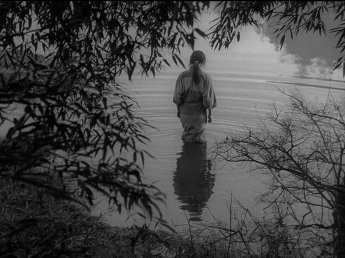Taxi! (1932)
Here’s a film that doesn’t live up to its exclamation point. Roy Del Duth directs an early Cagney vehicle in which he plays an independent cab driver resisting mob pressure from Consolidated Cab Co. He eventually marries Loretta Young, the daughter of a veteran cab driver who finds himself in jail after shooting a mob heavy who tried to kick him off his corner in the first reel. The mob intrigue angle is quickly dropped and the film becomes a flaccid melodrama about the domestication of short-fuse Cagney. In this respect, it’s the tragic inversion of Ford’s The Whole Town’s Talking of 1935, in which Edward G. Robinson must convince his co-workers that, despite appearances, he really isn’t ‘Killer’ Manion. Both films are about the impossibility of ethnic character actors playing against type and getting away with it.
Here’s a film that doesn’t live up to its exclamation point. Roy Del Duth directs an early Cagney vehicle in which he plays an independent cab driver resisting mob pressure from Consolidated Cab Co. He eventually marries Loretta Young, the daughter of a veteran cab driver who finds himself in jail after shooting a mob heavy who tried to kick him off his corner in the first reel. The mob intrigue angle is quickly dropped and the film becomes a flaccid melodrama about the domestication of short-fuse Cagney. In this respect, it’s the tragic inversion of Ford’s The Whole Town’s Talking of 1935, in which Edward G. Robinson must convince his co-workers that, despite appearances, he really isn’t ‘Killer’ Manion. Both films are about the impossibility of ethnic character actors playing against type and getting away with it.
Despite the uneven script, Taxi! proves an occasionally lively production. There are some unaccountable documentary shots of New York which look all the more incongruous (and oddly surreal) next to the studio sets. And the second scene offers the unparalleled pleasure of James Cagney doing his shtick in Yiddish.
Lorna Doone (1922)
Maurice Tourneur offers his interpretation of Blackmore’s oft-filmed romance. I haven’t read that once-popular chestnut, but Tourneur’s version feels quite streamlined. He keeps his cutting to a minimum and develops a few choice scenes to the hilt. He focuses mostly on partings and reunions, constants in the courtship of Lorna Doone and John Ridd. The material leaves something to be desired, but the film confirms (as if it needed to) Tourneur’s mastery of staging and composition. Most of the major scenes begin in disarray, as characters dance around the frame until they find their way to their preordained places.
This is a highly classical piece, with the emotional logic of character relationships conveyed succinctly in visual terms. One particularly unassuming but accomplished early scene finds Lorna and John standing in the foreground of a forest, speaking for the first time in ten years or more. John’s departure is drawn-out: he holds onto Lorna’s hand for as long as he can while slinking away into the midground and finally slipping away and receding into the background. Tourneur makes many important scenes pivot around the gradual revelation of frame depth. Though not a precise or wholly accurate label, Tourneur appears today to have been a singular and fastidious kind of classicist—the kind who stocked his big scenes with undulating shadows in the foreground to complement the action of the background and adhere to some unspoken, vaguely academic notion that each shot should include enough signposts to prove just how many planes the artist could deploy simultaneously.

1 comment:
This is a greaat post
Post a Comment